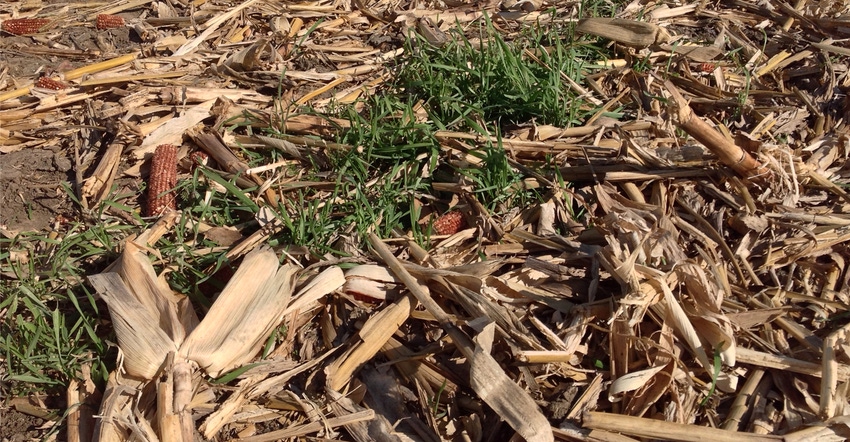August 14, 2019

The costs associated with buying seed and planting cover crops can cause farmers to hesitate and decide against growing them, especially during times when profit margins are tight for corn and soybean production. However, some opportunities exist to help offset the costs that come with cover crops.
Farmers who sell soybeans to the ADM supply chain going to ADM’s processing plant in Des Moines are eligible to enroll in a cost-share program through the ADM and Unilever Sustainable Soy program. First-time cover crop growers will receive $40 per acre on up to 40 acres to try cover crops on their farm. Those who have already been seeding cover crops will get $10 per acre on up to 160 acres, or 10% of their acres farmed, whichever is larger.
Growers who sell their corn directly to Cargill at Eddyville in southeast Iowa are eligible for a similar cover crop cost-share program through PepsiCo.
Soil health benefits, erosion control
“Cover crops have a lengthy list of benefits that help improve soil health as well as water quality, which will benefit farmer profitability in the long run,” says Brett McArtor, Iowa Soybean Association regional agronomist. “By making a few management adjustments to incorporate cover crops into the crop rotation, farmers can see the soil health benefits within the first few years.”
Programs like ADM’s and PepsiCo’s can help ease the cost uncertainty. “With farmer buy-in, as well as public and private funding becoming increasingly available, we can continue to move the needle forward in terms of soil and water quality,” McArtor says.
The ADM and Unilever payments can be stacked with other incentives offered through federal and state cost-share programs, such as the USDA Natural Resources Conservation Service’s Environmental Quality Incentives Program. The Iowa Department of Agriculture and Land Stewardship also offers discounts on crop insurance premiums for farmers who grow cover crops.
McArtor suggests farmers start small when beginning with cover crops to make their management less intimidating. That’s the reason behind the 40-acre cap for new users with this incentive program. As farmers get comfortable having cover crops in their farming operation, they can add cover crops to more acres.
Little yield drag
The benefits of cover crop use start to show around year two or three, when soil organic matter and nutrients increase, infiltration of rainfall into the soil improves, and weeds are suppressed.
“In our on-farm studies and other research being done, with the right management strategy, we’re seeing all of these improvements without much or any yield drag,” McArtor says. “We are halfway through year three of our ISA long-term cover crop studies, and we are already seeing differences in soil compaction and density, as well as better water infiltration. These are all important factors when we consider the amount of rain we had this past spring.”
Similar weather patterns are predicted for the next several years and managing for these rain events will become more important. Cover crops will have a big role to play, he says.
Helpful information available
These “40 by 40” cover crop cost-share programs are managed through Practical Farmers of Iowa.The site includes an enrollment form and a list of locations accepting soybeans into the ADM chain, located across Iowa.
If you want to plant cover crops and aren’t sure where to start, PFI’s website has an interactive page to guide the user through the decision of what cover crop will work best for them. Also, PFI has a searchable directory online to find cover crop services near you. For example, where are you sourcing your cover crop seed? Are you looking for someone to custom plant the seed for you this fall?
For answers to specific questions, contact Chris Wilbeck at [email protected] or phone 515- 232-5661.
About the Author(s)
You May Also Like






